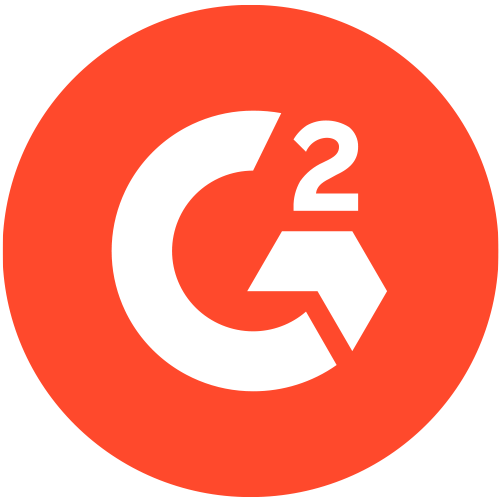Your business — and your workforce — move fast. Give employees and managers the tools they need to stay ahead of the rush.
HR and Payroll Software for Restaurants
Now serving more time and better engagement.
Why Restaurants and Hospitality Use Paylocity
All-in-One Platform for Your Workforce
Hire Faster to Keep Service Running Smoothly
- Meet candidates where they are with text-to-apply, QR code promotions, and self-scheduling.
- Keep pay competitive by accessing real-time market data to guide compensation decisions.
- Streamline screening and background checks with trusted assessment and verification tools.


Take Turnover Off the Menu
- Foster a values-based culture across locations and shifts with social communication tools.
- Let employees know their voice matters with surveys that produce actionable insights.
- Provide career growth opportunities with skills training and performance coaching.
Keep Shifts Covered and Compliant
- Integrate POS and scheduling with payroll and time tracking to reduce errors, save time, and ensure employees are paid correctly for every hour worked.
- Automate shift differentials and pay rules to calculate rates accurately.
- Create rules to comply with specific state and federal labor laws — like overtime, breaks, and waivers.

?ts=1749844947757&fmt=webp&dpr=off)
Turn Workforce Data Into Action
- Control labor costs by tracking scheduling, headcount, and turnover trends across locations.
- Boost retention and performance by spotting engagement gaps and acting before issues escalate.
- Hire and staff smarter with real-time insights on applicants, tenure, and role trends.
Loved by Employers and Employees



What Makes Paylocity Different?

Take a Self-Guided Tour
Experience the Paylocity difference in this interactive tour through some of our time-saving features and innovative employee tools.
Supporting Restaurant and Hospitality Leaders Just Like You
related resources
FAQs on Restaurant Payroll
How do you choose a restaurant payroll provider?
When choosing a restaurant payroll provider, there are several factors to consider.
- Make sure the provider offers the specific services you need, such as handling taxes and compliance with labor laws.
- Look for a provider with a good reputation and positive customer reviews.
- Consider the cost of the service and whether it fits within your budget.
- Check if the provider offers online access to payroll information and employee self-service portals.
- Look for a provider who can integrate with your current accounting software.
- Evaluate the level of customer support offered by the provider.
Ultimately, it's important to choose a provider that can meet your specific needs and provide excellent service at a reasonable cost.
Do employers pay payroll taxes on tips?
Employers are generally not responsible for paying payroll taxes on tips that employees receive from customers. However, there are some exceptions and rules that employers must follow when it comes to tips and payroll taxes.
- Employers are responsible for withholding income taxes on tips, just like they do for regular wages.
- Employers must report all tips received by their employees to the IRS, either through Form 8027 (Employer's Annual Information Return of Tip Income and Allocated Tips) or by including them in the employee's W-2 form.
- Employers may be required to pay FICA taxes (Social Security and Medicare taxes) on tips if the employee's total wages (including tips) are less than the minimum wage and the employer makes up the difference.
- Employers should be aware of state-specific laws regarding the reporting and payment of payroll taxes on tips.
It's important for employers to be aware of the rules and regulations regarding tips and payroll taxes and to comply with them to avoid penalties and fines.
How does tip compliance work?
Tip compliance refers to the rules and regulations that employers must follow regarding the reporting and payment of payroll taxes on tips that employees receive. The employee agrees to report tips at a set rate, and the employer reports these tips to the IRS, either through Form 8027 or via the employee’s W-2 form.
The IRS provides guidance on tip reporting and recordkeeping with further information.
How to reduce turnover in the restaurant and hospitality industry?
Businesses in the restaurant and hospitality industry can reduce turnover by creating a company culture of engagement. Engaged employees are happier, more loyal, and more productive than their disengaged counterparts — meaning higher profitability for your organization. By creating connections between colleagues and investing in your employees, you can build a workplace that will win and keep top talent.
How do you calculate overtime payroll?
Overtime pay is calculated by multiplying the employee's regular rate of pay by 1.5 for each hour worked over 40 hours in a workweek. The regular rate of pay is the employee's total compensation (including base pay, bonuses, and commissions) divided by the number of hours worked.
- First, determine the employee's regular rate of pay, which is their total compensation (base pay, bonuses, commissions) divided by the total number of hours worked.
- Next, determine the number of overtime hours worked by subtracting 40 hours from the total number of hours worked in the workweek.
- Multiply the regular rate of pay by 1.5 to calculate the overtime rate of pay.
- Multiply the overtime rate of pay by the number of overtime hours worked to calculate the total overtime pay due.
For example: An employee works 45 hours in a week and earns $10 per hour. The employee's regular rate of pay is $10. The employee worked 5 overtime hours in that week.
- Overtime rate of pay = $10 x 1.5 = $15
- Overtime pay = $15 x 5 = $75
Some states have different overtime laws and regulations, and some employers have to pay time and a half for any hours worked over 8 hours in a day. It's important to check the state and federal laws and regulations for your specific situation.
What is digital onboarding for restaurants?
Digital onboarding lets new hires complete pre-boarding tasks from their phone, like uploading eligibility documentation and acknowledging the employee handbook. Platforms that use AI to guide employees step-by-step through tasks like choosing benefits and setting up direct deposit can be especially helpful for a younger or less experienced workforce.
Why is employee experience important for restaurants and hospitality?
In a people-driven industry, employee experience directly impacts customer experience. When teams feel respected, informed, and connected, they show up with more energy and purpose. An HCM platform with tools for recognition and social collaboration helps keep workers engaged across locations and shifts to reduce turnover.


%3ALarge?ts=1750100664900&dpr=off)







